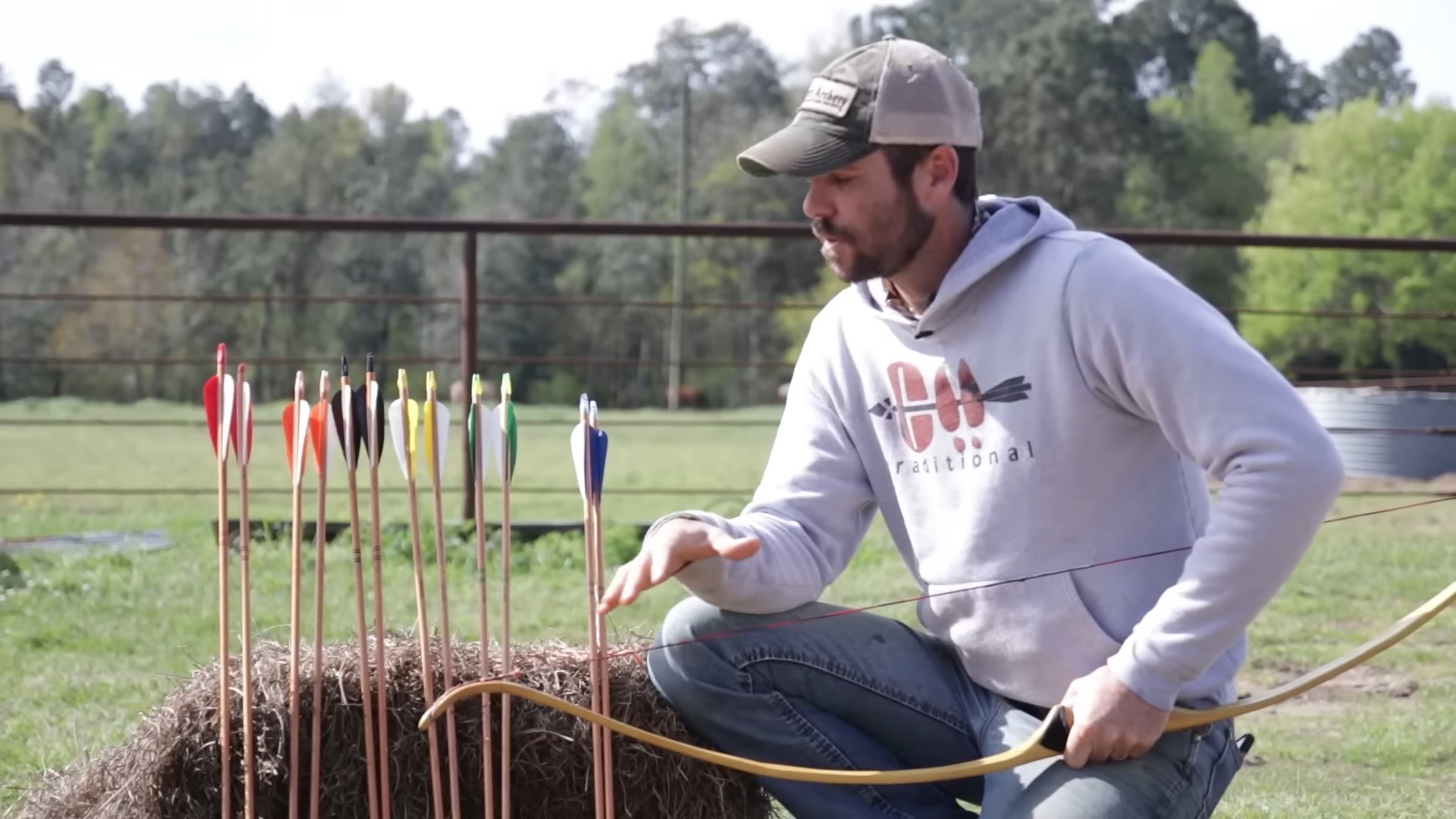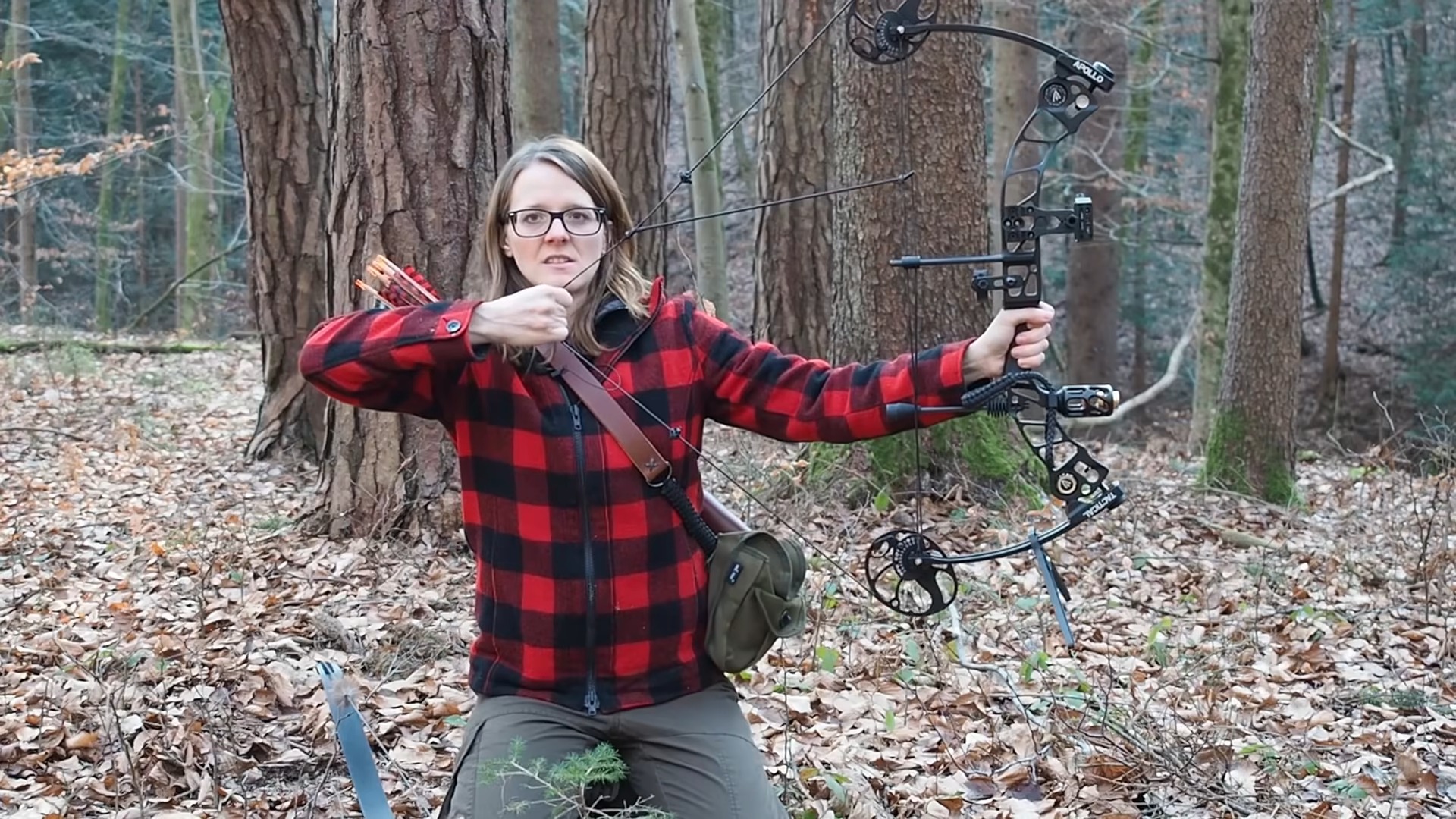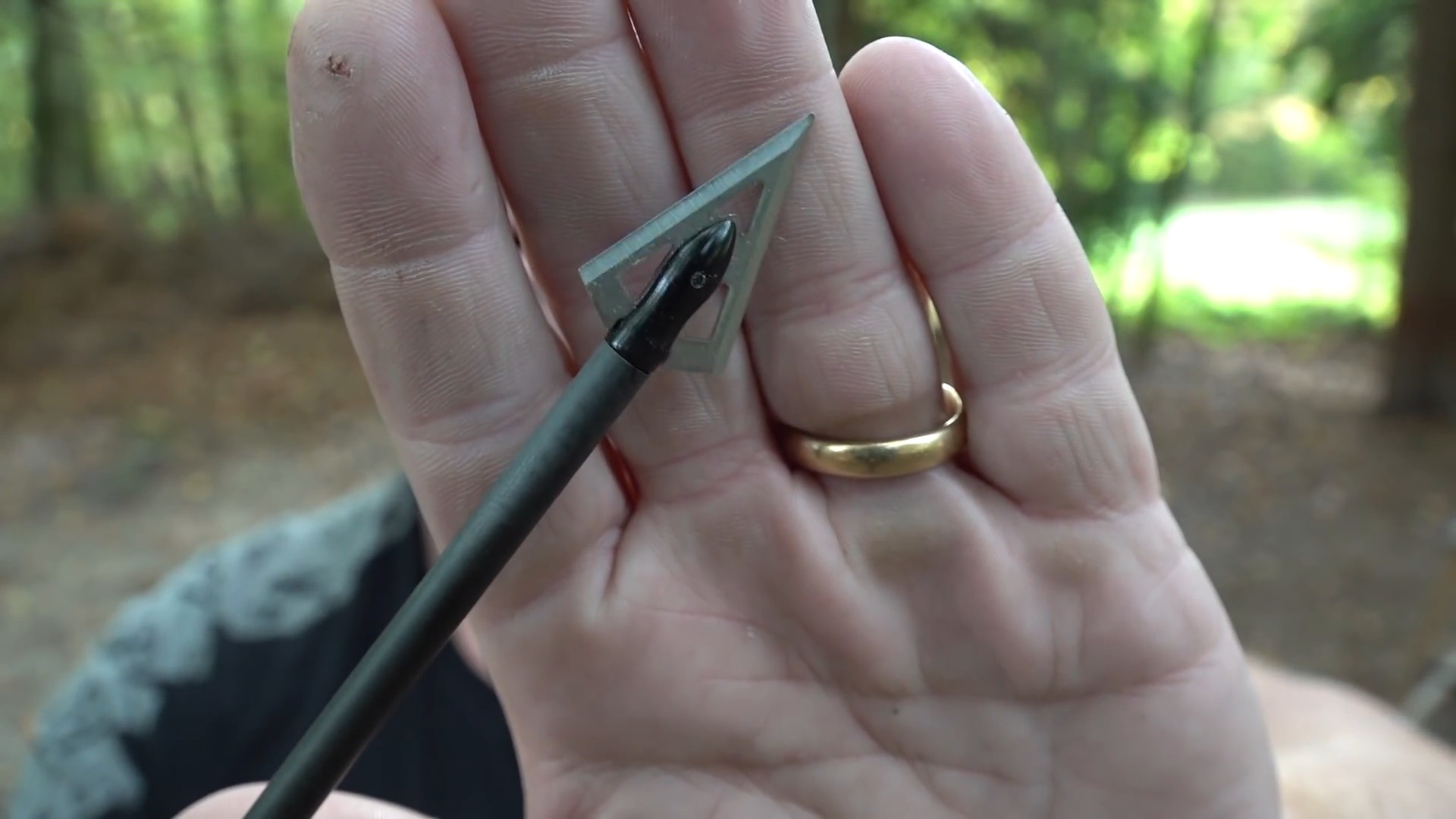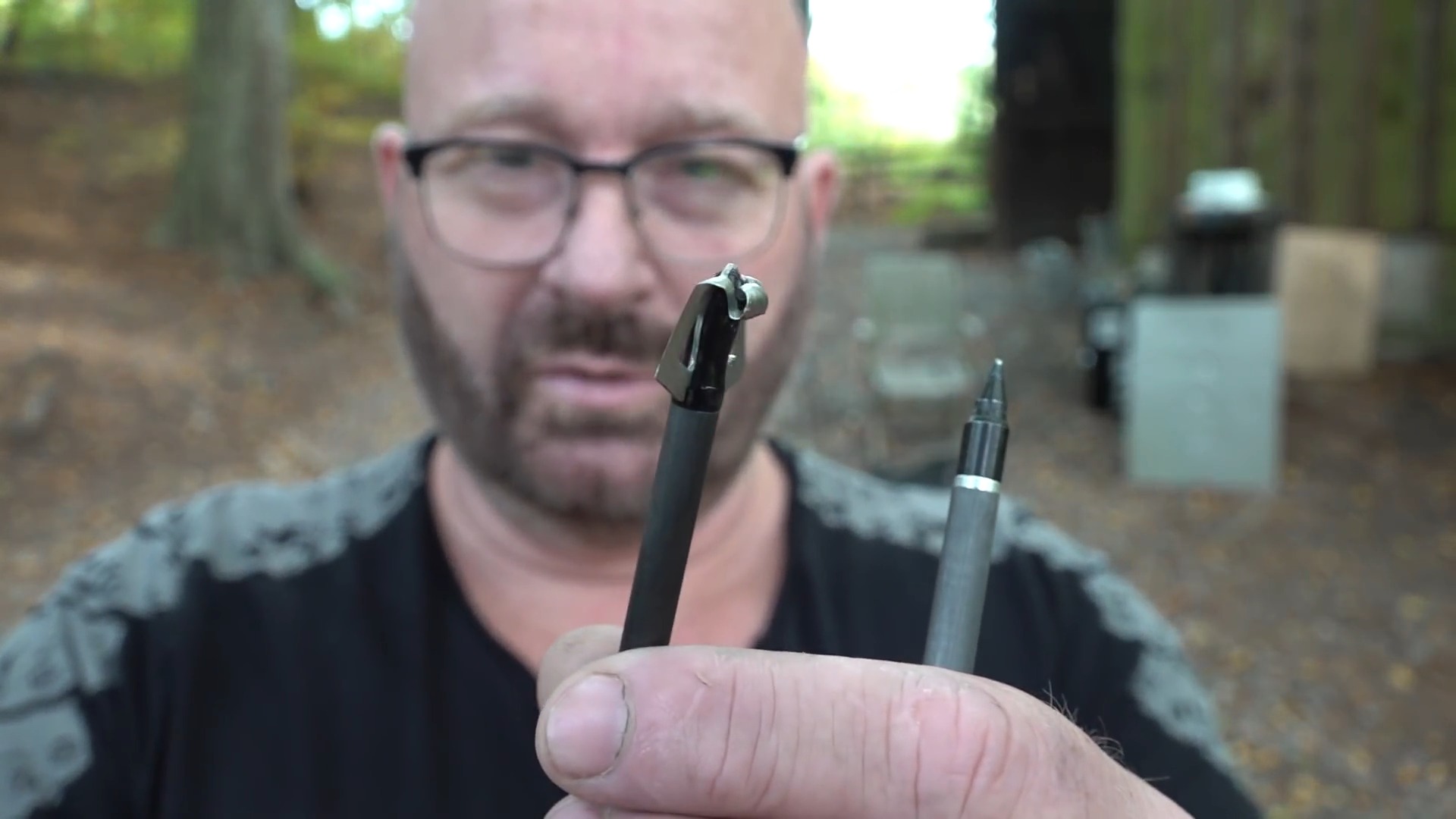Every archer knows the satisfying thrum of a well-released bowstring, a sound that’s music to their ears. Yet, it’s the silent dance of the arrow, from bow to bullseye, that really tells the tale of their skill.
I recall an instance where a promising talent stood perplexed on the range, their shots veering off target. The fault didn’t lie in their stance or draw; it was the arrow that betrayed them. It’s moments like these that highlight an essential truth: selecting the right arrow is as critical as the archer’s aim. Today, I will explain how to pick the right one.
The Impact of This Choice
The right arrow can mean the difference between hitting your mark and missing it completely. It’s about more than just length and material; it’s about matching the arrow to your bow and shooting style. With the right choice, you’ll see improved accuracy, penetration, and overall performance.
The Three Pillars of Selection
Arrow selection rests on three main pillars: length, spine, and weight. These must align with your bow’s draw weight and your draw length to create the perfect harmony.
Misjudge one element, and your arrow’s flight could be off. This could lead to poor accuracy or even damage to your bow.
A Step-By-Step Approach
In the following sections, we’ll tackle how to assess and choose arrows based on these pillars. We’ll also discuss materials and fletching, giving you the full picture and equipping you with the knowledge to make an informed decision.
Length Explained

The correct arrow length is crucial for safety and performance. An arrow that’s too short can slip off the rest and lead to dangerous scenarios. One that’s too long adds unnecessary weight and can affect the flex during flight, known as the archer’s paradox.
Measuring for the Perfect Fit
To find your ideal arrow length, start with your draw length. Add one to two inches to ensure the arrow safely clears the bow. Here’s a quick reference table to get you started:
| Draw Length (inches) | Arrow Length (inches) |
| up to 28 | 29 – 30 |
| 28 – 30 | 30 – 31 |
| 30 – 32 | 31 – 33 |
| over 32 | 33+ |
These are starting points. Always verify that the arrow extends beyond the bow when at full draw.
The Role of Spine in Accuracy
The spine refers to the arrow’s stiffness. An arrow that’s too stiff won’t absorb enough energy, and one that’s too flexible will absorb too much, leading to inaccuracy. The spine rating needs to match your bow’s draw weight to ensure the arrow flies true.
How to Match Spine to Draw Weight
Use manufacturers’ charts to match your bow’s draw weight to the recommended spine. These charts are a good starting point but testing different spines with your own bow is the best way to determine what works best for you. Here’s an example chart for recurve bows:
| Bow Draw Weight (lbs) | Recommended Arrow Spine |
| 15 – 25 | 600 – 700 |
| 25 – 35 | 500 – 600 |
| 35 – 45 | 400 – 500 |
| 45 – 55 | 340 – 400 |
| 55+ | 300 – 340 |
Remember, these are not hard rules but guidelines. Adjust based on your shooting style and needs.
Choosing Arrow Weight

The weight of your arrow is critical for penetration and kinetic energy, especially for hunters. Lighter ones travel faster but can be more affected by wind and have less momentum. Heavier variations provide deeper penetration and are generally more stable in flight.
Finding the Balance
What you need is a balance. Too heavy, and your arrow will drop quickly, reducing your effective range. Too light, and you may not achieve the desired impact.
A general rule is to aim for 6 to 8 grains of arrow weight per pound of draw weight. Here’s a quick guide:
| Bow Draw Weight (lbs) | Arrow Weight (grains) |
| 15 – 25 | 90 – 200 |
| 25 – 35 | 150 – 280 |
| 35 – 45 | 210 – 360 |
| 45 – 55 | 270 – 440 |
| 55+ | 330 – 500+ |
Adjust based on your specific use case. Hunters often go heavier for better penetration, while target shooters may opt for a lighter arrow for a flatter trajectory.
Materials and Their Impact
Arrow shafts come in various materials, each with benefits and drawbacks. Aluminum arrows are affordable and have consistent spine ratings but can bend upon impact. Carbon variations are more durable and offer excellent performance but at a higher cost.
Selecting the Right Material for Your Needs
When choosing arrow material, consider your budget and what you’ll be using the arrows for. Hunters might prefer the durability of carbon, while those new to archery might start with aluminum due to the lower cost. Here’s a comparison:
| Material | Durability | Cost | Use Case |
| Aluminum | Moderate | Low | Beginners, Casual Use |
| Carbon | High | High | Hunting, Serious Use |
| Fiberglass | Low | Low | Leisure, Youth |
| Wood | Low | Low | Traditional Archery |
Each material has its place, and the choice often comes down to personal preference and the specific demands of the discipline.
The Role of Fletching

Fletching, the vanes or feathers on an arrow, stabilize it during flight. Plastic vanes are durable and work well for outdoor shooting where moisture is a factor.
Feathers are more traditional and provide better stabilization for arrows leaving the bow but are sensitive to wet conditions.
Choosing the Right Fletching
Larger fletching stabilizes the arrow quicker but can cause more drag, reducing speed. Smaller fletching results in less drag but may not stabilize as quickly, affecting accuracy. Consider your needs:
| Fletching Size | Stability | Speed | Best for |
| Large | High | Lower | Indoor, Precision Shots |
| Medium | Moderate | Mid | General Use |
| Small | Lower | High | Long-Range, Speed Shots |
For recurve bows, medium to large fletching is often recommended to ensure the arrow stabilizes quickly after the release.
Fine-Tuning Arrow Selection for Precision Shooting
Precision shooting demands arrows fine-tuned to your bow’s characteristics and your technique. Even the slightest discrepancy in length, spine, or weight can throw off your shot.
It’s not just about what’s recommended; it’s about what works specifically for you. Try different combinations, and pay attention to how each arrow behaves. Make adjustments until you find the sweet spot.
Impact of Arrow Variability on Performance
No two arrows are identical, even when they’re from the same batch. Variations can affect flight, so it’s crucial to test each one. Invest in a good arrow inspector to check for straightness and balance.
An arrow that’s slightly off can have a noticeable impact on your accuracy, especially at longer distances.
Arrow Tips and Their Influence

The tip of the arrow, the point, is often overlooked but plays a significant role in the arrow’s performance. Field points are ideal for target shooting, while broadheads are used, alongside other essentials, for hunting.
The weight of the point also affects the arrow’s front-of-center (FOC) balance, which influences stability and accuracy.
The Balance of Arrow Points
A heavier point increases the FOC, which can lead to better stability and accuracy, particularly at longer ranges. However, too heavy a point can cause the arrow to nose-dive. Use the following table as a guideline to start:
| Point Weight (grains) | Expected FOC (%) |
| 75 – 100 | 7 – 10 |
| 100 – 125 | 10 – 15 |
| 125 – 150 | 15 – 20 |
| 150+ | 20+ |
A higher FOC is often desired by hunters for increased penetration, while target archers might opt for a lower FOC for a flatter trajectory.
The Importance of Consistent Practice
Each arrow you shoot is an opportunity to learn. How does it react to wind? What’s the drop rate at different distances? How does it group with others? You’ll only find these answers through consistent practice.
Pay attention to these details, and adjust your selection based on real-world performance.
Recording and Analyzing Data
Keep a shooting journal. Record the conditions, the arrow specs, and the results of your shots. Look for patterns that can inform your arrow selection.
Perhaps you’ll notice that lighter arrows perform better on calm days or that a certain spine seems to give you tighter groupings. Use this data to refine your arrow choices.
Advanced Considerations

For the archer seeking peak performance, customizing arrows can be a game-changer. Tailoring the length, fletching, and point weight to your specifications can lead to a level of precision factory configurations can’t match.
Consider purchasing bare shafts and building your arrows, selecting each component based on the attributes that suit your shooting style and needs.
Tuning Your Arrows to Your Bow
Arrow tuning is the process of adjusting the bow to the arrows you’ve selected. This can include tweaking the brace height, nocking point, and even the stiffness of the arrow rest.
The goal is to ensure that the arrow leaves the bow with minimal interference, maintaining a straight flight path. Arrow tuning is a detailed process and can be as much about feel as it is about technical adjustments.
Maintaining Your Arrows for Longevity and Safety
Arrows undergo stress with each shot and can become damaged over time. Regular inspections for cracks, bends, and fletching damage are essential.
Damaged arrows can be unsafe and will not perform consistently. Establish a routine to check everything before and after shooting sessions.
Tips for Maintenance
Store your arrows in a quiver that protects them from the elements and accidental damage. Rotate them during practice to ensure even wear. When cleaning, avoid harsh chemicals that can weaken materials. Simple soap and water are often enough. Replace fletching and nocks as needed to keep your arrows in top condition.
FAQs
Can I use the same arrows for both my recurve and compound bow?
It’s not recommended. While it’s possible to use the same ones if the draw weight and draw length are similar, recurve and compound bows have different mechanics and energy transfer.
Arrows that are optimized for a recurve bow typically have different spine requirements than those for a compound bow due to the latter’s cam system.
How do I know if my arrows are too stiff for my recurve bow?
If they are too stiff, they won’t flex properly when shot. This results in the arrow veering off to the left (for a right-handed archer) because it doesn’t absorb the bow’s energy efficiently.
You might notice inconsistent accuracy, especially at longer distances.
What should I consider when choosing arrow nocks for my recurve bow?
You should ensure the nocks fit snugly on the bowstring but not too tightly so that they don’t release smoothly upon shooting.
The nock type should also be compatible with the arrow shaft diameter. Moreover, consider nocks that are easily visible to help you in fetching the arrow and during the recovery.
How often should I replace my recurve bow’s arrows?
The lifespan depends on the frequency of use, the materials it’s made of, and how well it’s maintained. Inspect your arrows regularly for signs of wear or damage.
Carbon ones can last for years if they’re well-cared-for and not damaged, while aluminum variations may need replacing more often if they get bent.
Will the color of my fletching affect arrow performance?
The color of the fletching does not affect the performance. The color can be used for better visibility to track the arrow in flight and for personal preference.
Some archers use different colors to help distinguish between different sets of arrows.
Is there an ideal time of day for testing out new arrows?
The best time for testing out new arrows would be when the conditions are calm, typically in the early morning or late afternoon when the wind is usually at its lowest.
This minimizes environmental variables that can affect the flight, allowing you to test the true characteristics.
Final Thoughts
Selecting the right arrows for your recurve bow is a process of aligning your gear with your goals. Whether you’re hunting, competing, or simply enjoying the sport, the right arrows will enhance your experience.
Take the time to experiment with different lengths, spines, weights, materials, and fletchings. Remember, the best arrow for you is the one that meets your needs, fits your budget, and feels right in your hands.
Invest in quality equipment that complements your shooting style, and you’ll see your performance soar.
I’m Matt, and I’ve been with GearDesciple for about five years after my brother Jared roped me in. I wasn’t always into the outdoors, but a few reluctant hikes turned into a real passion. Now, I help test and review gear with a focus on honest, experience-based advice. As someone who came to outdoor life later on, I’m especially driven to help newcomers find their footing.